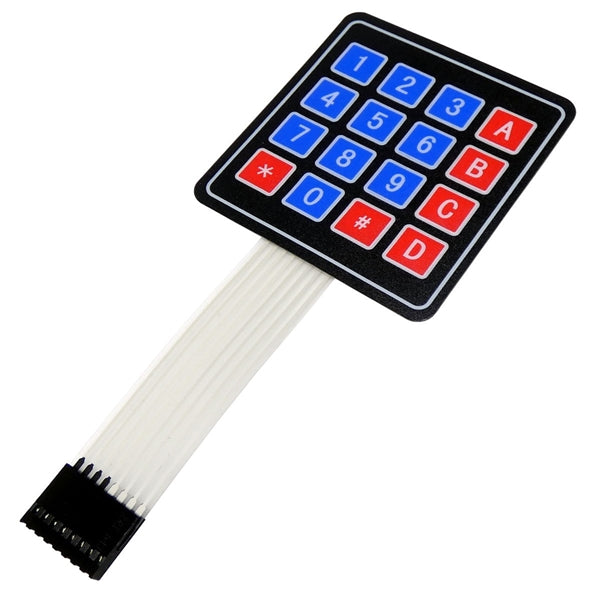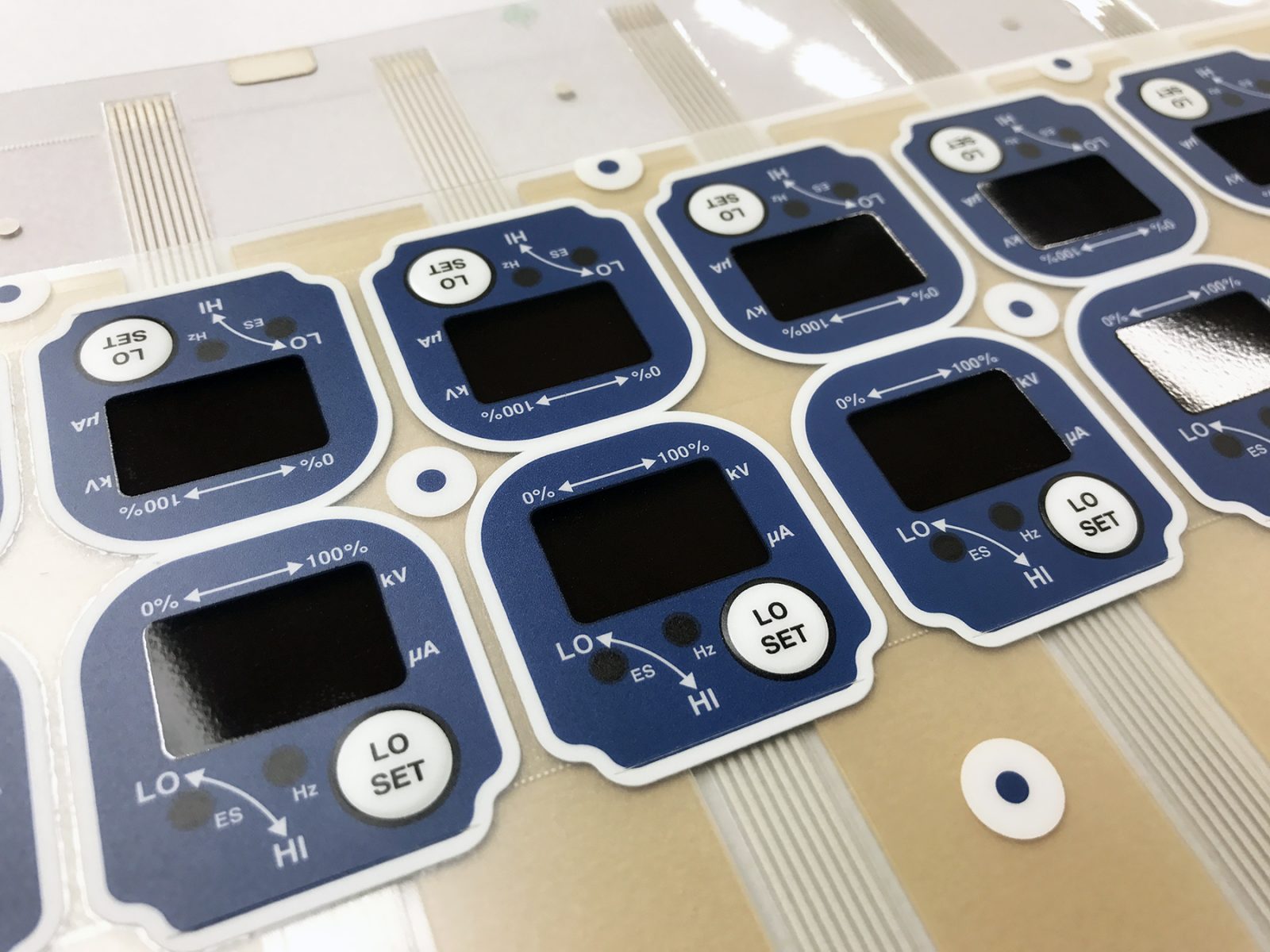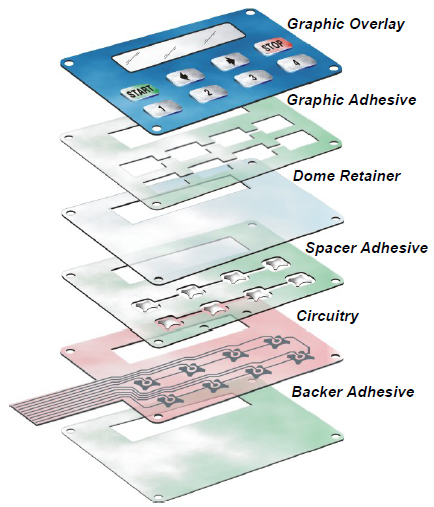All Regarding Membrane Switch: Understanding Its Layout and Functionality
When you assume regarding the control interfaces in modern-day gadgets, membrane switches often come to mind. Let's discover what collections membrane layer switches apart from various other control systems.
What Are Membrane Buttons?

Their seamless nature makes them easy to clean and resistant to dirt and moisture, an important feature in lots of settings. Membrane buttons can likewise be tailored pertaining to shape, size, and graphics, allowing manufacturers to produce one-of-a-kind user interfaces customized to specific products. Plus, they're light-weight and thin, which assists in lessening the overall mass of gadgets. Generally, membrane buttons play a substantial duty in improving individual experience across a broad variety of applications.
How Membrane Layer Changes Work
When you press a key on a membrane button, it activates a straightforward yet effective device. The leading layer, frequently constructed from adaptable product, presses down onto a conductive layer underneath it. This action bridges the void between conductive traces, completing an electric circuit. As quickly as the circuit shuts, it sends out a signal to the tool's controller, which translates your input.
You'll discover that the tactile responses varies based on the button layout, supplying either a soft click or an extra pronounced action. As soon as you launch the trick, the membrane returns to its initial placement, reopening the circuit and quiting the signal. This process takes place nearly instantaneously, ensuring a responsive user experience.
Membrane buttons are prominent as a result of their durability and resistance to dust and dampness, making them optimal for different applications, from household home appliances to clinical gadgets. Comprehending this procedure assists you appreciate their prevalent usage.
Secret Parts of Membrane Switches
Recognizing the key elements of membrane layer switches is basic for grasping their performance and layout. The safety layer shields versus ecological variables and wear, expanding the switch's life-span. By comprehending these components, you'll gain insight into just how membrane switches run and their value in different applications.
Materials Used in Membrane Switch Over Style
The efficiency and durability of membrane changes heavily depend on the materials utilized in their design. You commonly come across polyester and polycarbonate as primary substratums due to their outstanding toughness and flexibility. These materials resist scrapes and chemicals, making them excellent for requiring environments.
The conductive layers usually utilize silver or carbon, selected for their reliability and conductivity. membrane switch manufacturer. Silver gives superior efficiency, while carbon is a cost-effective alternative. For the overlay, you could think about a matte or shiny finish, depending upon your aesthetic demands and individual experience
Make particular to choose adhesives that withstand ecological elements like temperature level and moisture. Choosing the right products will guarantee your membrane layer switch stands the test of time.
Style Factors To Consider for Membrane Buttons
While making membrane layer buttons, it's crucial to think about numerous variables that influence their functionality and user experience. Beginning by concentrating on the format and switch size; make sure they're user-friendly and simple to browse. Consider the tactile feedback you desire to provide-- will customers require an obvious click or a softer touch? Additionally, think of the materials you'll other utilize, as they'll influence resilience and visual appeals.
Do not neglect the graphic layout; clear labeling and color contrast are considerable for visibility. Verify your style accommodates environmental elements, like wetness or temperature level variations, which could influence performance. Lastly, remember the value of testing models with real individuals to collect feedback and make necessary modifications. This iterative procedure aids you fine-tune the layout, confirming it meets both practical and visual demands successfully. By very carefully thinking about these aspects, you'll develop a membrane button that enhances functionality and satisfaction.
Applications of Membrane Buttons
Membrane layer buttons are flexible components located in numerous applications, from commercial devices to customer electronics. You'll see their effect in devices that call for durable interfaces and in devices that gain from streamlined styles. Understanding these applications helps you value the performance and usefulness of membrane buttons in day-to-day innovation.
Industrial Tools Use
When you're looking to boost the capability of industrial tools, membrane switches supply a dependable service that integrates longevity with straightforward layout. These buttons are perfect for extreme environments, giving resistance to dirt, dampness, and chemicals. Embrace membrane buttons to enhance your procedures and enhance total efficiency.
Consumer Electronic Devices Combination
In the domain name of customer electronic devices, membrane layer switches play an essential duty in enhancing user interaction and device functionality. Membrane layer switches additionally ensure sturdiness and resistance to dust and moisture, expanding the lifespan of your electronic devices. By picking membrane buttons, you boost not simply the performance but also the design of your devices, making day-to-day communications smooth and satisfying.
Advantages and Drawbacks of Membrane Layer Buttons
While membrane buttons provide a series of advantages, they likewise include some downsides that you should consider. One considerable advantage is their compact style, making them optimal for space-constrained applications. They're also cost-effective, supplying a long Learn More Here lasting remedy with a low production cost. Additionally, their smooth surface area is very easy to clean, improving hygiene in atmospheres like healthcare facilities.

Membrane buttons can have a much shorter lifespan contrasted to mechanical switches, especially under hefty usage. They can likewise be much less tactile, which could influence customer responses during procedure. Stabilizing these pros and cons will help you establish if membrane buttons are the appropriate fit for your job.
Frequently Asked Inquiries
How Much Time Do Membrane Layer Changes Usually Last?
Membrane changes generally last in between 5 to ten years, depending upon use and environmental problems. You'll desire to evaluate variables like wear, exposure to dampness, and temperature variations to gauge their longevity successfully.
Can Membrane Layer Switches Be Personalized for Specific Styles?
Yes, you can customize membrane buttons to fit details designs (membrane switch manufacturer). You'll have the flexibility to choose shades, forms, and layouts that match your job's needs, guaranteeing they blend flawlessly with your overall aesthetic
What Is the Price Array for Membrane Layer Change Manufacturing?
The price range for membrane layer switch manufacturing normally falls in between $1 and $10 per unit, depending on variables like layout complexity, quantity, and products. You can obtain quotes from manufacturers to find the very best alternative.

Are Membrane Layer Switches Waterproof or Resistant?
Membrane layer buttons can be created to be water-proof or immune, depending on materials utilized and building and construction methods. If you need them for wet atmospheres, assure you define those requirements during the design process.
How Do Membrane Changes Compare to Standard Switches?
Membrane switches are normally thinner and more flexible than traditional buttons, providing a streamlined design. They're usually less complicated to cleanse and incorporate, yet might not dig this offer the tactile feedback you're used to with mechanical alternatives.
Conclusion
